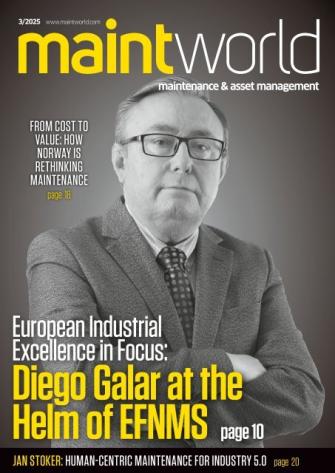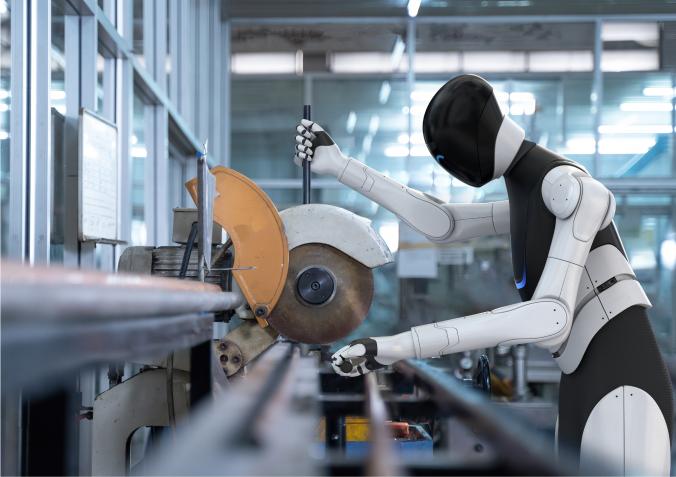Summary NVDO Maintenance Compass 2015
The NVDO Maintenance Compass gives an overview of the current trends and status of the Dutch maintenance sector. The good news of this year is that the confidence of the maintenance sector is high.
All sectors indicate a revenue growth compared to last year, with an average of 4 percent. Furthermore, 81 percent of the respondents think that the maintenance sector will sustain this growth next year. Next to that we see that there are more ‘leavers’ than vacancies. The maintenance sector focuses on doing “more with less”.
Taking a broad perspective, we see five important and interesting developments in the sector:
1. Ageing asset base: Maintenance companies are dealing with an increasingly ageing asset base. This is largely due to great pressure on costs in previous years, which caused companies to postpone their investments regarding the replacement of current assets. These companies chose for the revision of assets instead. These decisions are attractive in the short term, but in the long run the business case for replacement is actually more positive. Next to this, older installations tend to be less energy efficient. So, a replacement can contribute to realizing energy – and climate goals, as can be read in the vision document accompanying this Maintenance Compass.
2. Operational Excellence: Attention to Operational Excellence is the most important trend for the Dutch maintenance sector this year. Like last year, the economy has a big impact on the Dutch maintenance sector, which puts pressure on the need to keep costs at a minimum. Operational Excellence is an important way in which companies can achieve this.
3. Changing level of education: It is remarkable that the number of HBO (Higher Vocational Education) employees increase at maintenance companies, while MBO 1+2 (Intermediate Vocational Education or Community College graduates) decrease. Because of a higher supply of recently graduated HBO students, HBO graduates fulfil tasks that would normally be carried out by MBO graduates. Next to this, a tight labour market and constantly altering tasks of maintenance professionals (more data- and IT-intensive jobs) could be potential causes of the aforementioned development.
4. Outsourcing of labour: The number of respondents that is satisfied with the outsourcing of labour is only 26 percent, while 53 percent indicates that they are not satisfied with the on-going contracts. The rest of the respondents have a neutral opinion about these contracts. Companies are not satisfied with the alignment of the contracts with their strategy and do not know how they can ensure that both parties have the same interests. In the Infra sector, we see that the use of these contracts is one of the most important trends. Sectors like the Process industry and Manufacturing, that have been using performance contracts for longer, have learned some valuable lessons on this topic. Knowledge sharing about this subject can help companies with signing future contracts.
5. Need for data and IT: Technological innovations can cause a big stir in the maintenance sector in the coming years. The use of technologies like augmented reality, 3D printing, Analytics, Internet of Things and Robotics has created the opportunity to increase the up-time of assets, reduce costs and make the sector safer. IT and data are needed to be able to realize these opportunities.
All in all, we conclude that the economic climate has a significant impact on the Dutch maintenance sector. However, an improvement of the economy has been forecasted and consumer confidence is on the rise. This fact, as well as the technological innovations that will cause changes in the sector, seem to indicate positive prospects. The NVDO will support her members in achieving these promising prospects by improving the transparency and collaboration of the sector as a whole.
The Dutch Maintenance Society provides the national maintenance-industry with this Compass on yearly basis. With this Compass the NVDO gives a clear direction on the development of knowledge about the Dutch maintenance sector.
Maintain Your Own Health
Absence due to illness in the Dutch maintenance sector is far below national average.
The Dutch maintenance sector never stops developing, which is why its priorities are continuously changing. This can be said both of the maintenance field taken as a whole and of individual maintenance organisations individually. To provide a clear picture of this process, the Netherlands Association for Effective Maintenance (NVDO) each year draws up an inventory of trends in the Dutch maintenance field.
This year, following a slight peak of 3.4 percent in 2014, absence due to illness in the sector is, at 3.1 percent, again substantially below the nation average, which is 0.7 percent higher. Something the maintenance sector can be proud of. The process industry, at 3.6 percent, has the highest score within the maintenance sector. Immovable property, with 1.9 percent, scores the lowest of all.
Low absence due to illness among maintenance professionals may be attributable to economic conditions and the fact that people are increasingly concerned about keeping their jobs. Further, the aspects of work/life balance and general well-being among employees of maintenance companies have become objects of growing attention. Yet another reason for lower absence due to illness could be the increased number of self-employed in the field; employers do not as a rule record absence among this group as being due to illness: in the event of illness they are simply not engaged.
Employers are also increasingly involved with risk inventorying and evaluation (RI&E). With RI&E, possible health and safety risks at the work location or on the work floor are accessed preventatively. A plan of action forms an obligatory part of RI&E, as laid down in the Employment Conditions Act (Arbowet).
Europe-wide, the Dutch Maintenance Society (NVDO) is the largest sectoral association in the maintenance field, representing the entire maintenance market in the Netherlands, with an annual turnover to the amount of €30–35 million, equal to approximately 4 percent of the GDP of the Netherlands. According to the organisation’s publication, Maintenancecompass, the sector provides employment to about 260,000–300,000 maintenance professionals – in other words, approximately 4 percent of the working population in the Netherlands is employed in the maintenance sector.







![EMR_AMS-Asset-Monitor-banner_300x600_MW[62]OCT EMR_AMS-Asset-Monitor-banner_300x600_MW[62]OCT](/var/ezwebin_site/storage/images/media/images/emr_ams-asset-monitor-banner_300x600_mw-62-oct/79406-1-eng-GB/EMR_AMS-Asset-Monitor-banner_300x600_MW-62-OCT.png)



